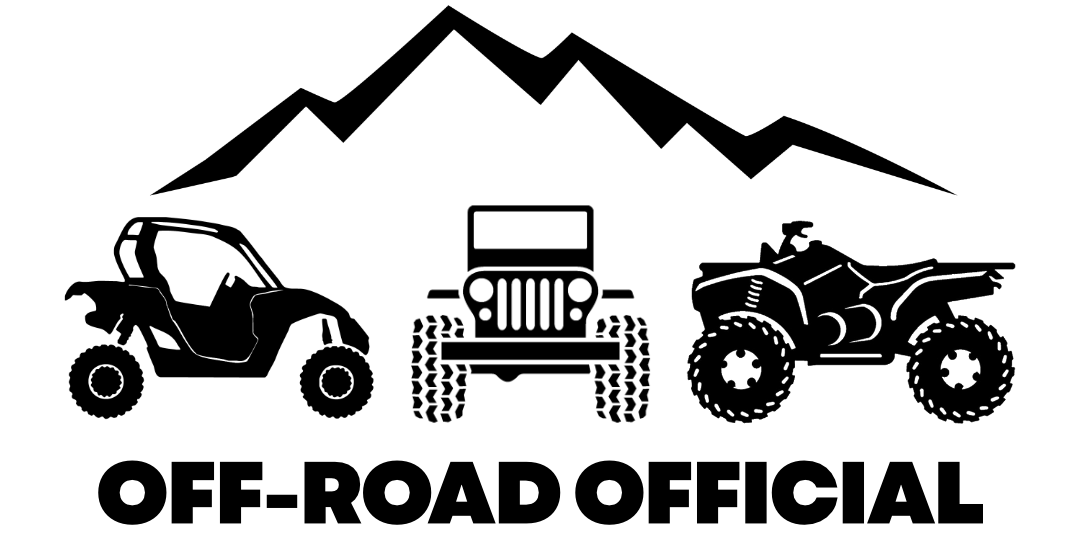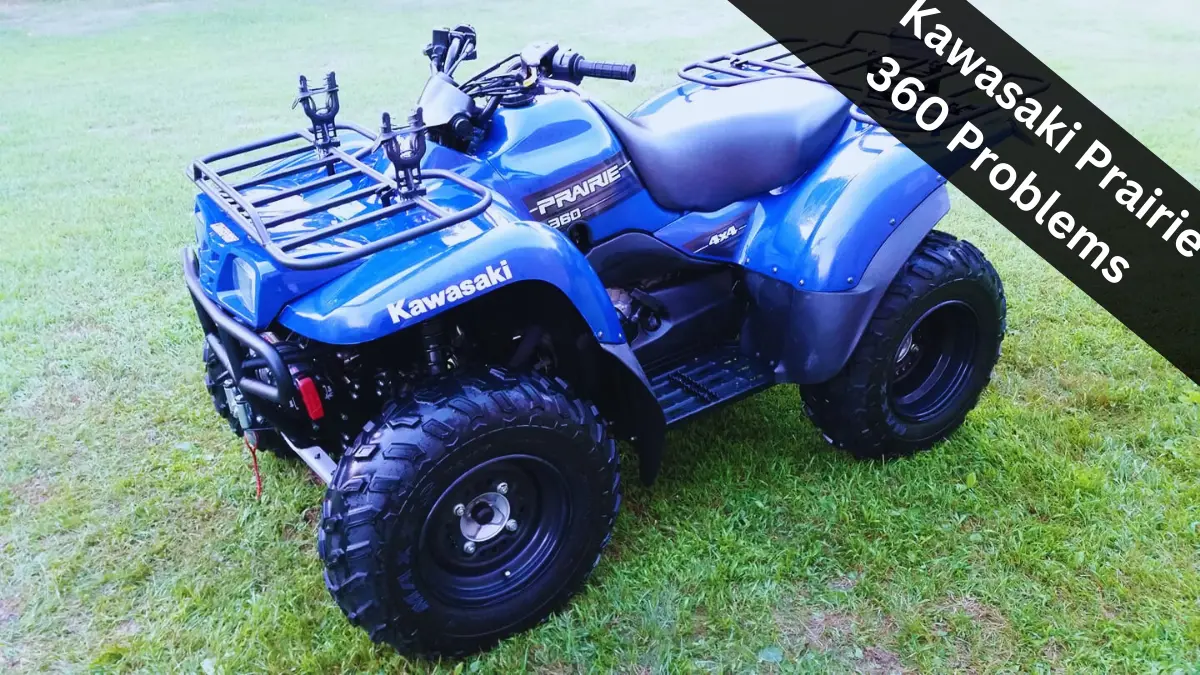The Kawasaki Prairie 360 was one of the best selling ATVs in the industry during its eleven year production run through 2013.
While it was never one of the fastest ATVs, it topped the list of the best ATVs for the money during its heyday.
Like other Kawasaki classics including the Mule 3010, this model’s ability to stand the test of time has many owners still enjoying their units today.
But while these machines are as reliable as they come, they do still suffer from some common Kawasaki Prairie 360 problems including:
- Tippy When Cornering
- Cold-Natured Due To Carburetor
- Valves Causing Compression Loss
- Overheating
- Starting Trouble
Read on for a detailed look at each of these common problems, along with likely causes and proven fixes.
Tippy When Cornering
The Kawasaki Prairie 360 is known for being a little tippy.
Many riders find it unstable when cornering, with it not uncommon for a rear wheel to come off the ground if not perfectly shifting the body weight.
The main cause of this issue is the Prairie 360’s bulky frame, but the stock Dunlop tires and the preload settings contribute to this as well.
Fixes
Owners who have upgraded to better tires and ensured their rear preload adjustable springs are on the softest setting confirm this helps to minimize the instability of the quad when taking corners.
Cold-Natured Due To Carburetor
The most common issue with the Kawasaki Prairie 360 is its tendency to be cold natured and have problems starting in cold weather.
Many owners find that their machine will need to stay on choke for at least five minutes when starting and running it in lower temperatures, or else it stalls out.
This cold starting issue is a tell-tale sign of a problem with the carburetor, which even the newer Brute Force 300 suffers from.
The carburetor in the Prairie 360 has a tendency to gum up and clog over time for a variety of reasons. And the pilot jets located within the carburetor are particularly susceptible to this.
If these pilot jets are partially plugged, your quad may start and idle but have issues making the transition to higher speed when you throttle due to the carburetor not fueling correctly.
Fixes
A thorough cleaning of the carburetor can help to resolve these issues, but be sure to pay attention to the pilot jets located inside as well.
In order to extensively clean the carburetor, you’ll need to first remove it from your quad and disassemble it.
Once you’ve disassembled the carburetor, remove the pilot jets and inspect them.
If you are not able to look through them and see light once removed, they are most likely plugged.
Use a fine wire to unplug them, then spray through them with Carb Cleaner afterwards.
Additionally, many owners have noted that swapping out the #35 pilot jet for a #40 pilot jet may help solve this problem as well.
Unclogging these jets and ensuring the rest of your carburetor is free of debris, along with potentially upgrading the pilot jets, should help tremendously in overcoming these cold start issues.
Valves Causing Compression Loss
In addition to cold starting issues, a number of Prairie 360’s seem to suffer from general hard starting, rough idling, and stalling.
The presence of these symptoms are likely attributed to the intake valves, which also cause problems in the Kawasaki Brute Force 650.
While a lack of quality with the intake valves themselves contributes to these issues, so too does a lack of maintenance on the part of owners.
Causes & Fixes
Any amount of dirt or debris that gets sucked through the motor will affect the intake valves, which makes it incredibly important to clean the air filter after every ten hours of riding as is recommended in the owner’s manual.
If not, the intake valves will start to wear over time.
This wear will tighten them up to the point of compression loss, which can lead to the symptoms mentioned above.
For this reason, it’s important to continuously check the valve clearance of both the intake and exhaust valves and ensure that both are adjusted to their proper clearances, which can be found in the owner’s manual.
It is also a best practice to replace these valves every year or two.
If you suspect your intake valves to be causing an issue, you can run a compression test or a leak-down test on them to help determine this.
Overheating
One of the most common recurring issues in the Prairie 360 is overheating, which occurs for a few different reasons:
- Clogged Radiator
- Radiator Fan
- Air Blockage
- Blown Head Gasket
Even newer models like the Brute Force 750 tend to suffer from overheating as well.
Causes & Fixes
Clogged Radiator
Since these models are usually ridden through trails and wooded areas, the radiator can clog with mud, sand, dirt and other debris over time.
You’ll want to clean your radiator fins often to remove any of this debris, especially when you’ve been in the mud.
Take off your grill from time to time and hose it out as well. You’ll be surprised at how much gunk ends up in places you can’t see once you remove the grill.
Radiator Fan
The radiator fan is also responsible for some overheating problems in the Prairie 360.
These models are factory-set so the fan won’t kick on until the engines temps reach over 200 degrees.
At higher elevations or during the hotter months, this will be problematic in that the fan won’t trigger in time to keep the engine in safe temperature ranges.
They’ll continue to climb even with the fan on, leading to overheating and risking serious damage.
You can overcome this by installing a toggle switch on your dash, which connects to the fan directly and gives the ability to turn it on whenever you want.
You can also rig your Prairie so that the fan just constantly runs whenever the engine is on.
Air Blockage
When your Prairie’s engine overheats, or even comes close, you’re at risk of developing an air pocket in your coolant system.
When this happens, the air pocket will block coolant from pumping properly, leading to your engine overheating.
The only way to correct this is to bleed the air from your system, and your engine won’t stop overheating until you do.
If during the bleeding process you see bubbling from the radiator fill area that won’t stop, you probably have a blown head gasket.
Blown Head Gasket
Your head gaskets are susceptible to blowing any time the engine overheats.
Use a head gasket test kit to determine if this is your problem, and replace as needed.
Starting Trouble
Many owners of a Prairie 360 eventually find that one day their engine won’t fire up, and the age of most of these units do them no favor in this regard.
If your Kawasaki Prairie 360 shows won’t start, it’s like due to one of the following:
- Battery Terminals/Wiring
- Battery
- Spark Plugs
- Old Fuel
Roll your eyes all you want, but the best way to prevent no-start issues is to cover your Prairie up with a good ATV cover between rides, whether parked outside or in.
Causes & Fixes
Terminals/Wiring
Start out by checking your battery terminals and the wiring that connects the battery if your ATV won’t fire up.
Make sure there’s no corrosion or debris on the terminals, and give them a good cleaning even if they appear fine.
Throw on some dielectric grease, which should help prolong their lifespan.
Move on to the grounding wires connecting the battery next.
These are a common no-start cause, and simply ensuring they’re connected properly and not damaged will save you the headache of inspecting elsewhere if it’s simple connection flaw.
Battery
Obviously, the battery may be your problem. Test it to ensure you’re getting the necessary 12+ volts.
Batteries will drain while the ATV sits, so hook your Prairie battery up to a good battery tender while not in use to avoid this.
Spark Plugs
The spark plugs will cause no-start issues in this model as well.
Check yours to ensure they’re not fouled – which would be indicated by a burnt-looking tip.
Be sure they haven’t gotten covered in fuel, oil, coolant or something else as well, which would cause them not to work properly.
If you need to replace yours, use a high performance iridium plug.
Old Fuel
If your ATV has been sitting for a while, the fuel in it may have gone bad – which will cause no-start issues as well.
If you’ve got old fuel in your Prairie, replace it and add some Sea Foam Motor Treatment to your fuel tank in order to help flush and clean the lines.
Conclusion
In summary, the most common Kawasaki Prairie 360 problems are tipping when cornering, the vehicle’s cold nature leading to hard starting in cold weather, the valves causing compression loss, overheating, and starting trouble.
Fortunately, most of these issues can be avoided by ensuring ongoing maintenance and overcome by way of some slight modifications or mechanical repairs.


